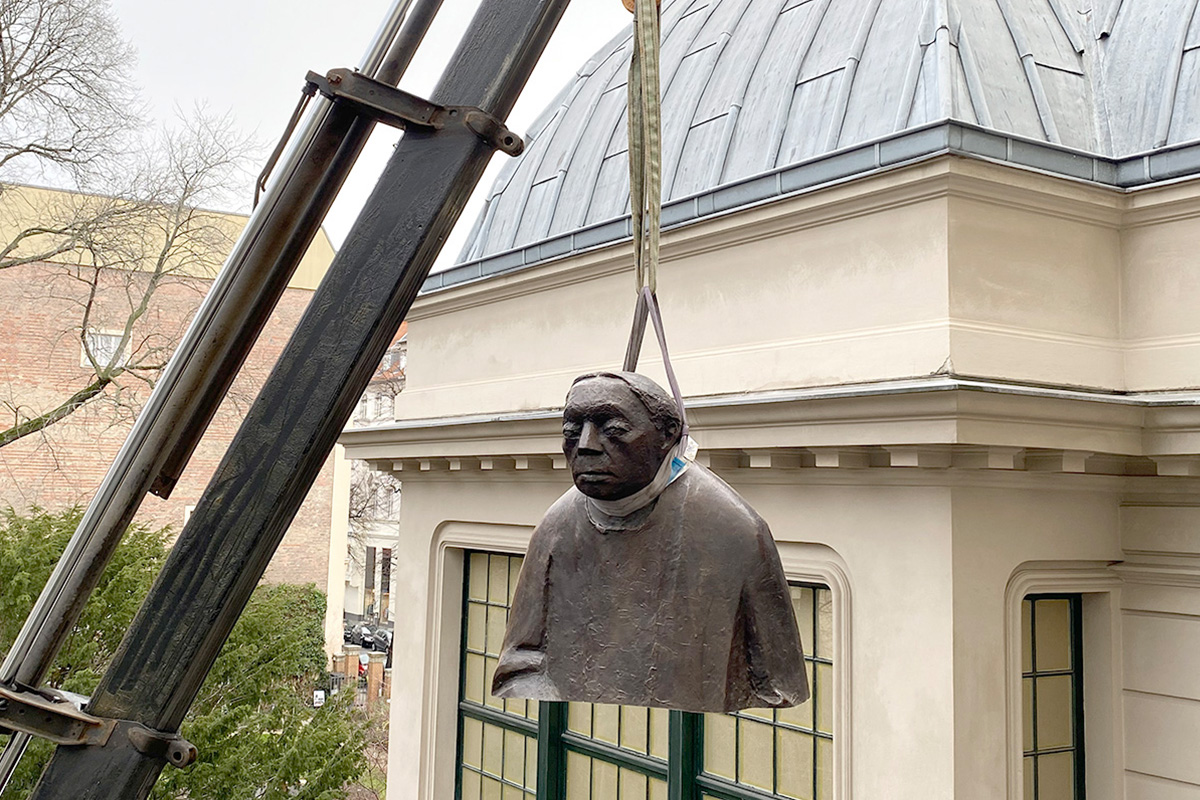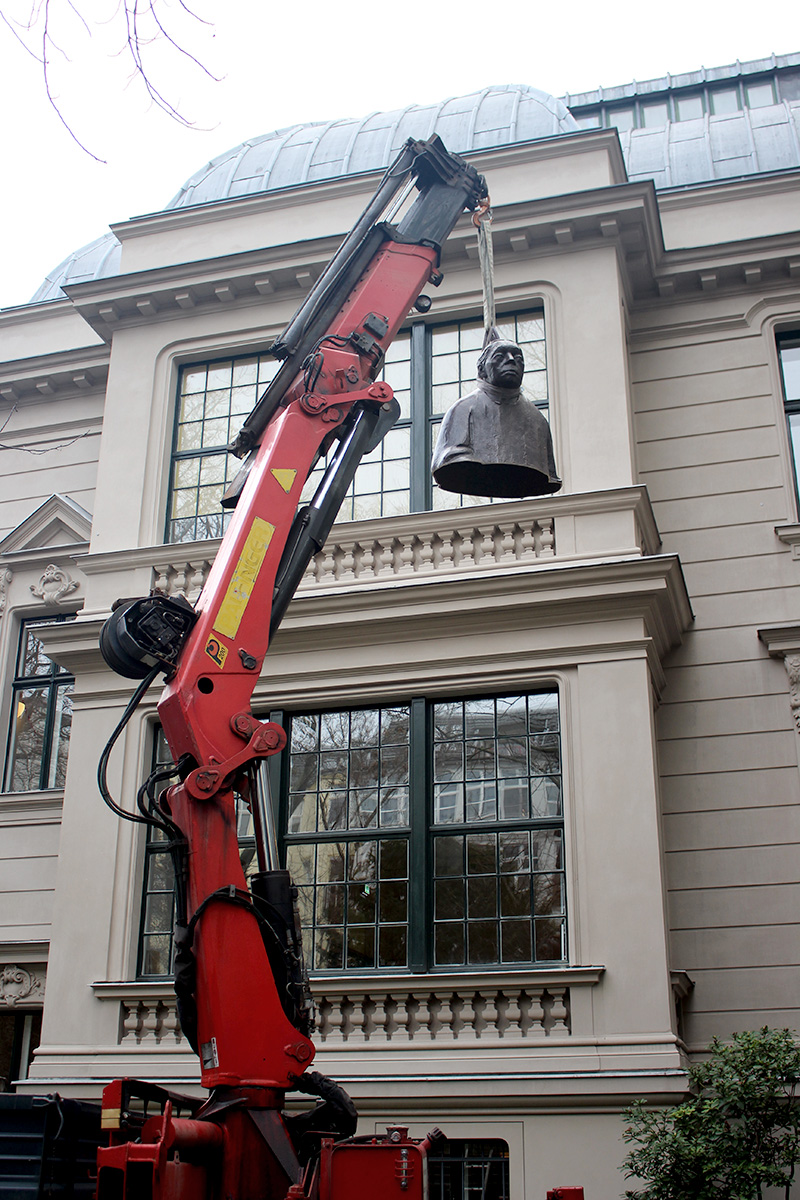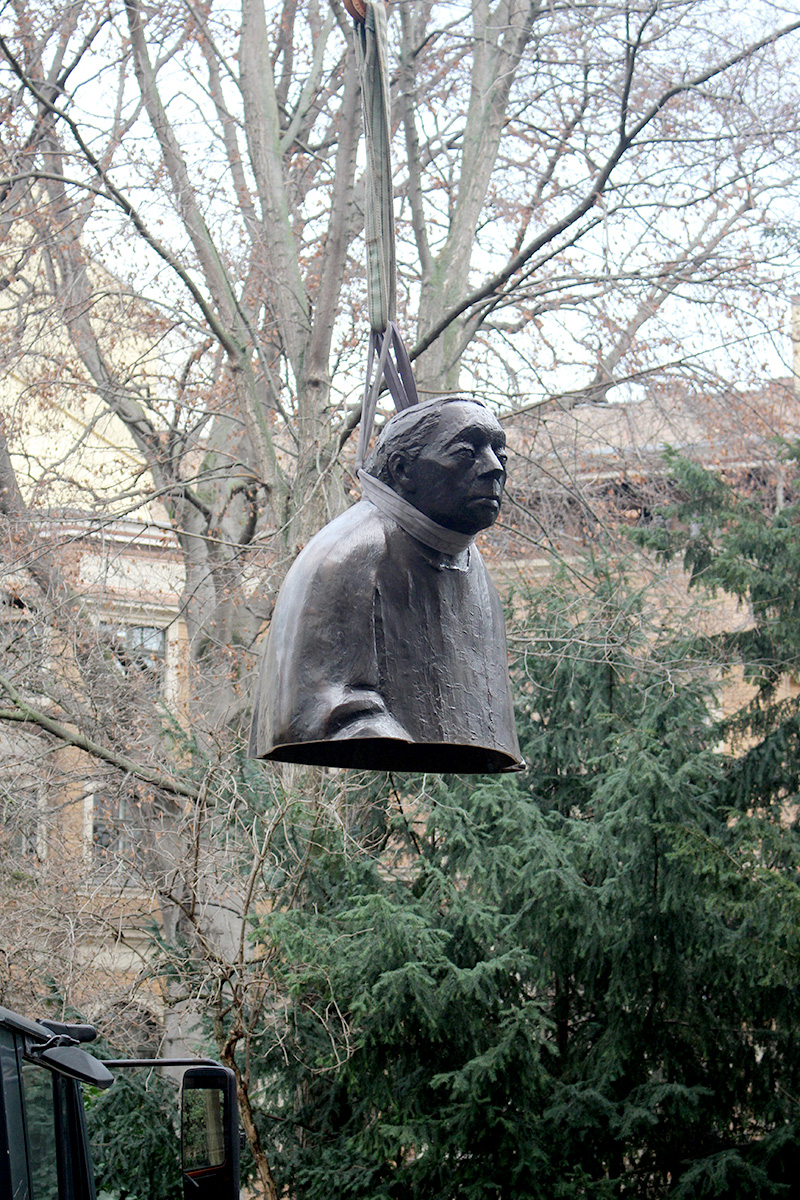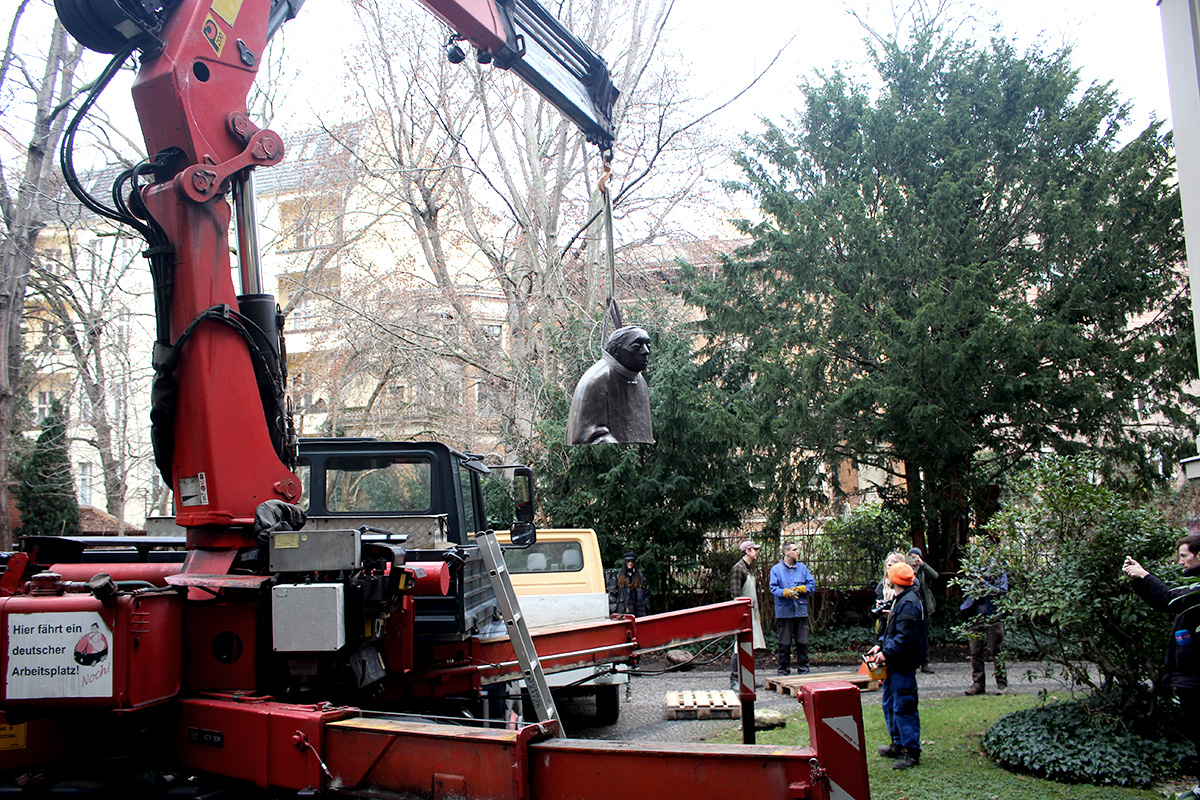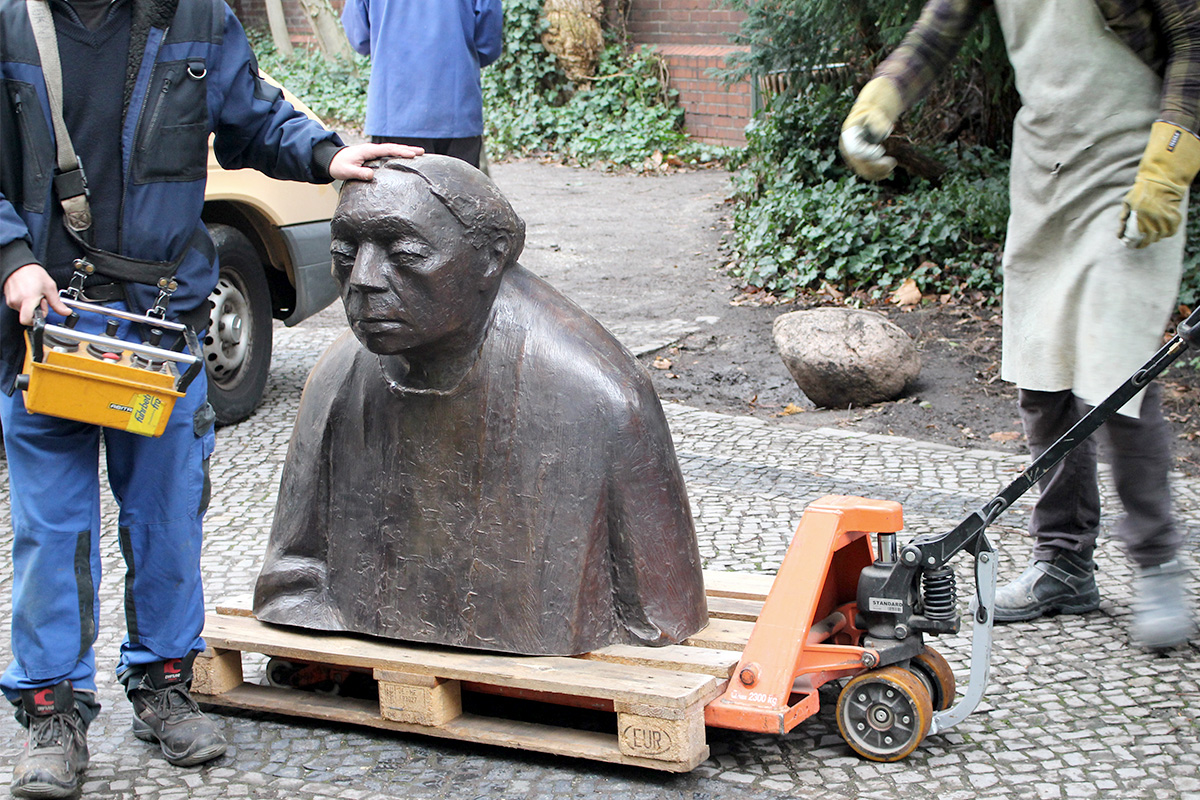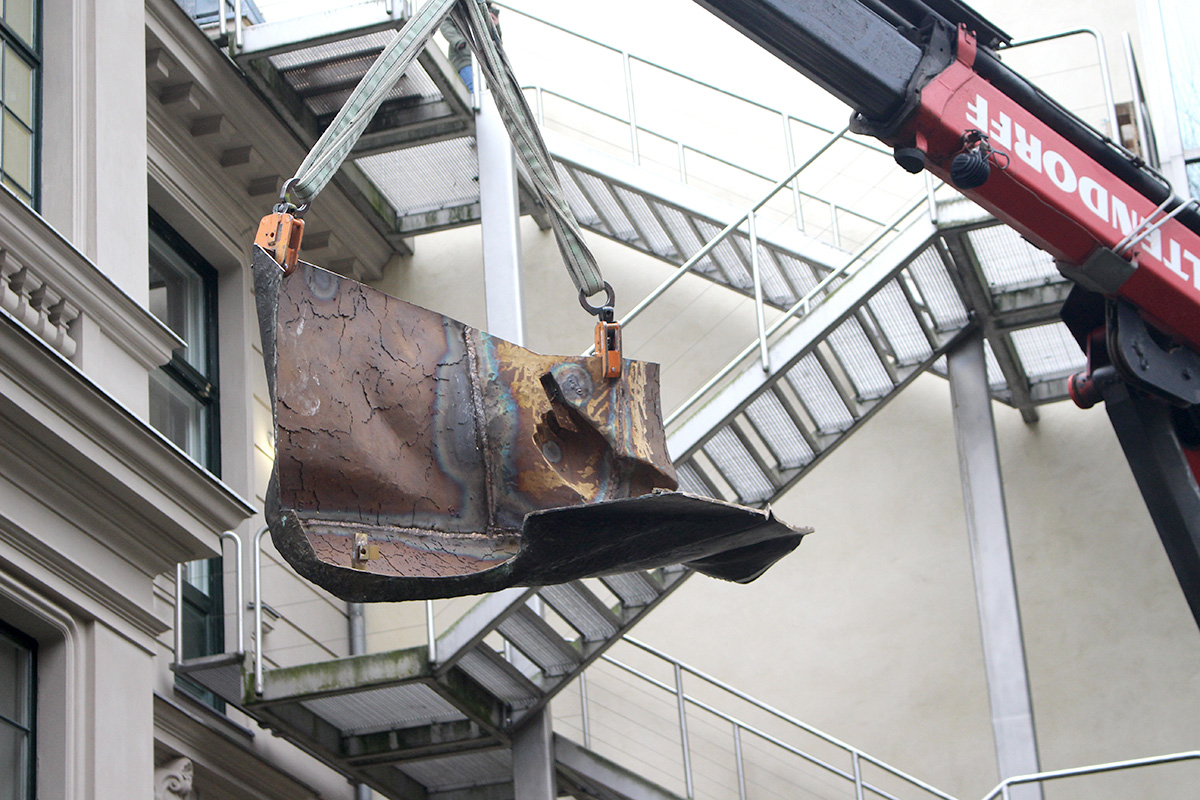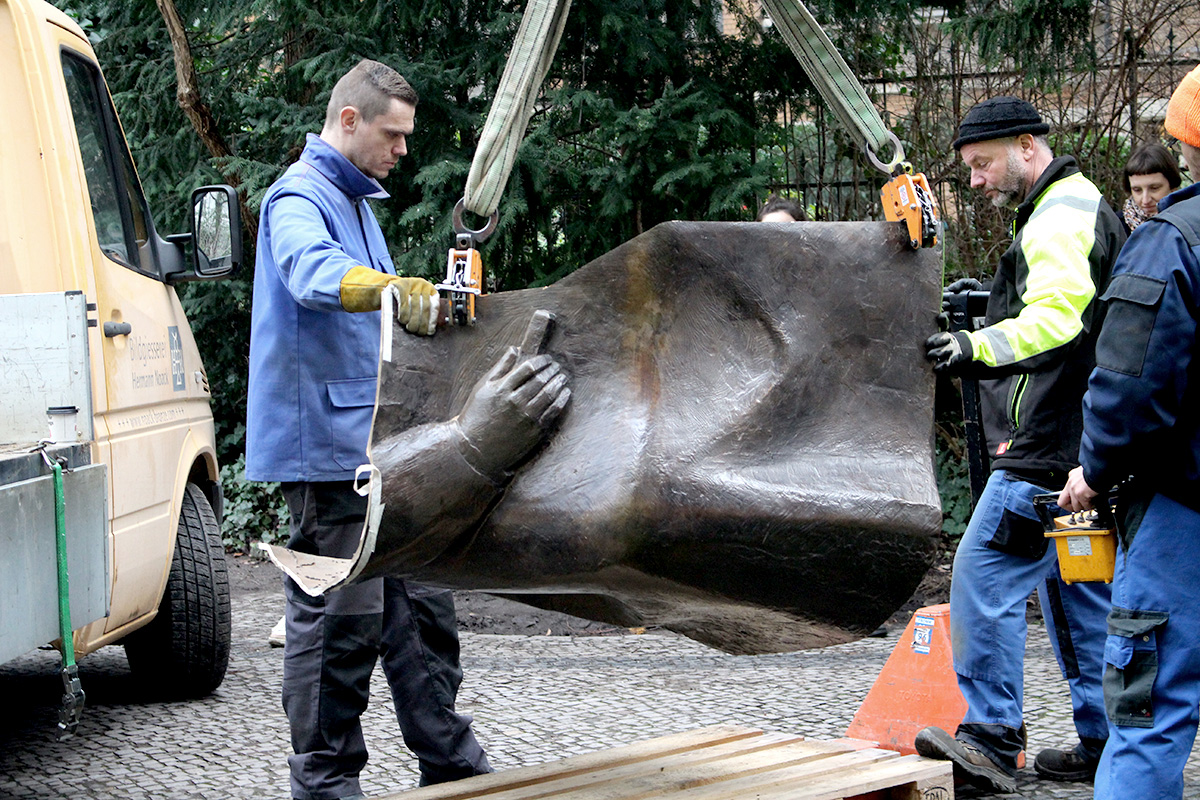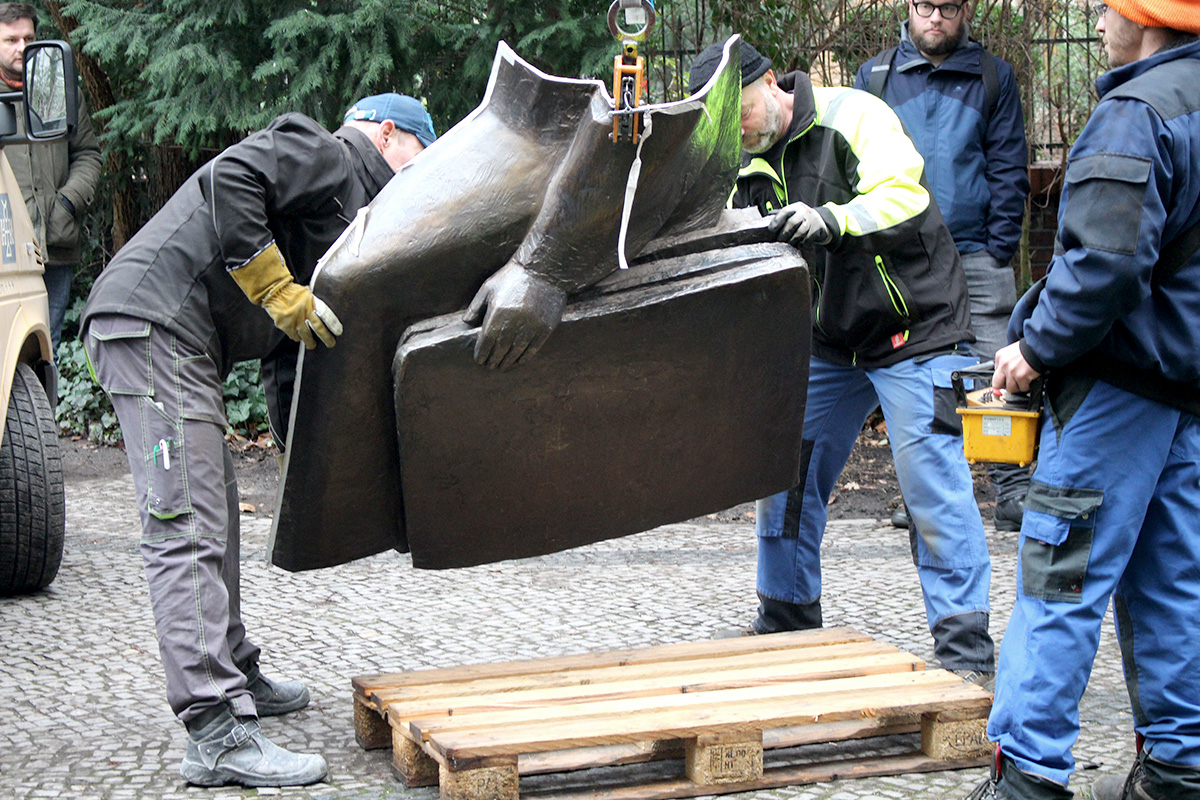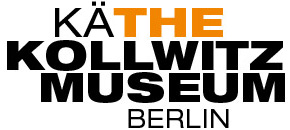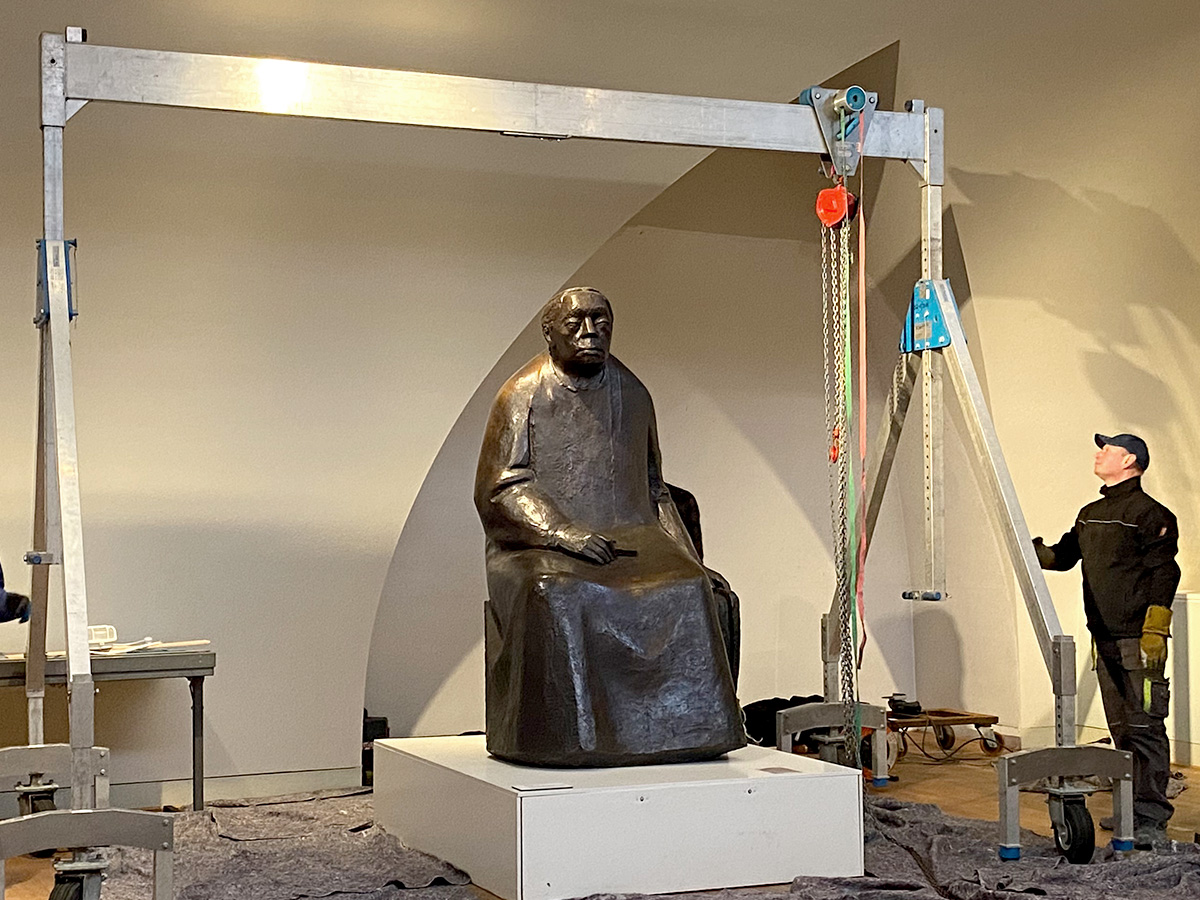
What a thrill that was! Last Thursday, the Kollwitz team and numerous members of the press were able to participate in the removal of the larger-than-life bronze sculpture by sculptor Gustav Seitz (1906-1969), which depicts Käthe Kollwitz sitting. The undertaking, which lasted several hours, started in the early hours of the morning. The team around Hermann Noack, the owner of the picture foundry of the same name, was responsible for the action. Noack also produced the second casting of the figure, which Gustav Seitz’s widow, Luise Seitz, donated to the museum for the opening in May 1986. The first casting has stood since 1960 on Kollwitzplatz opposite Käthe Kollwitz’s former home in Berlin’s Prenzlauer Berg district.
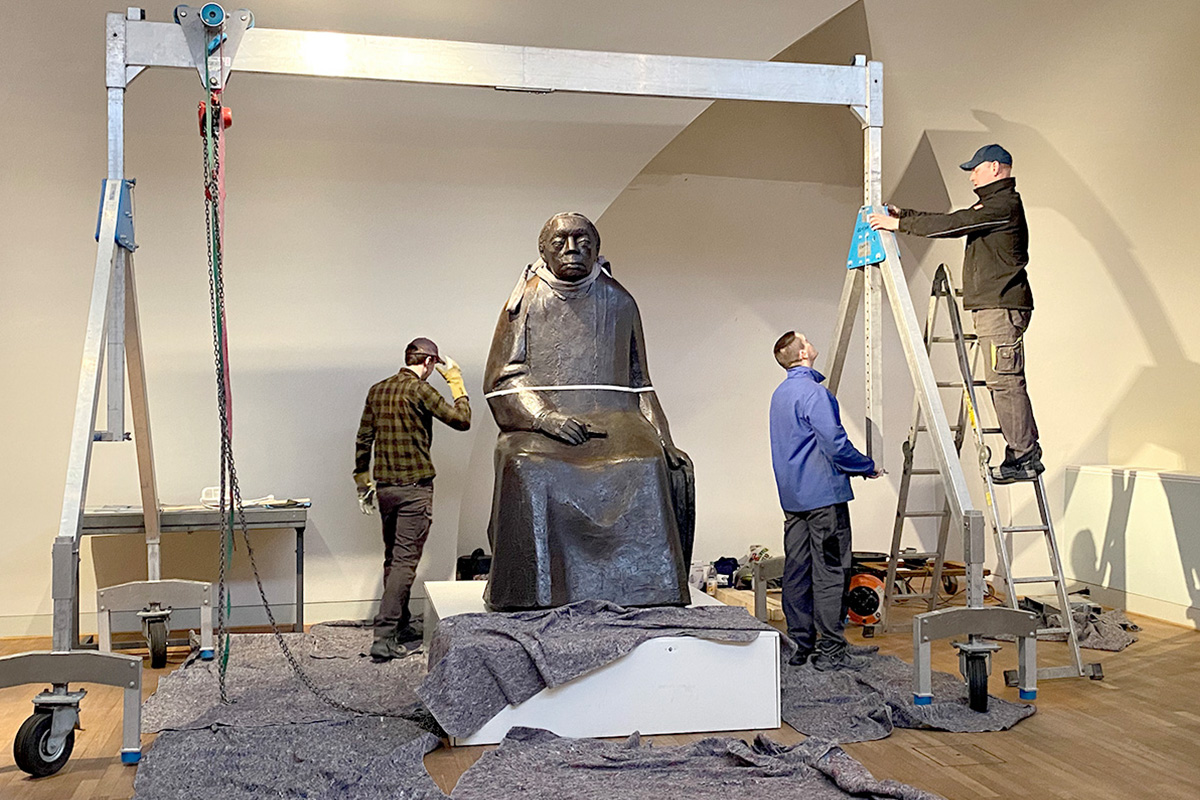
Museum director Dr. Josephine Gabler and Hermann Noack closely observed every hand movement – for the picture foundry team an almost everyday occurrence, but for the Kollwitz team an assignment that was eagerly awaited and accompanied by much excitement.
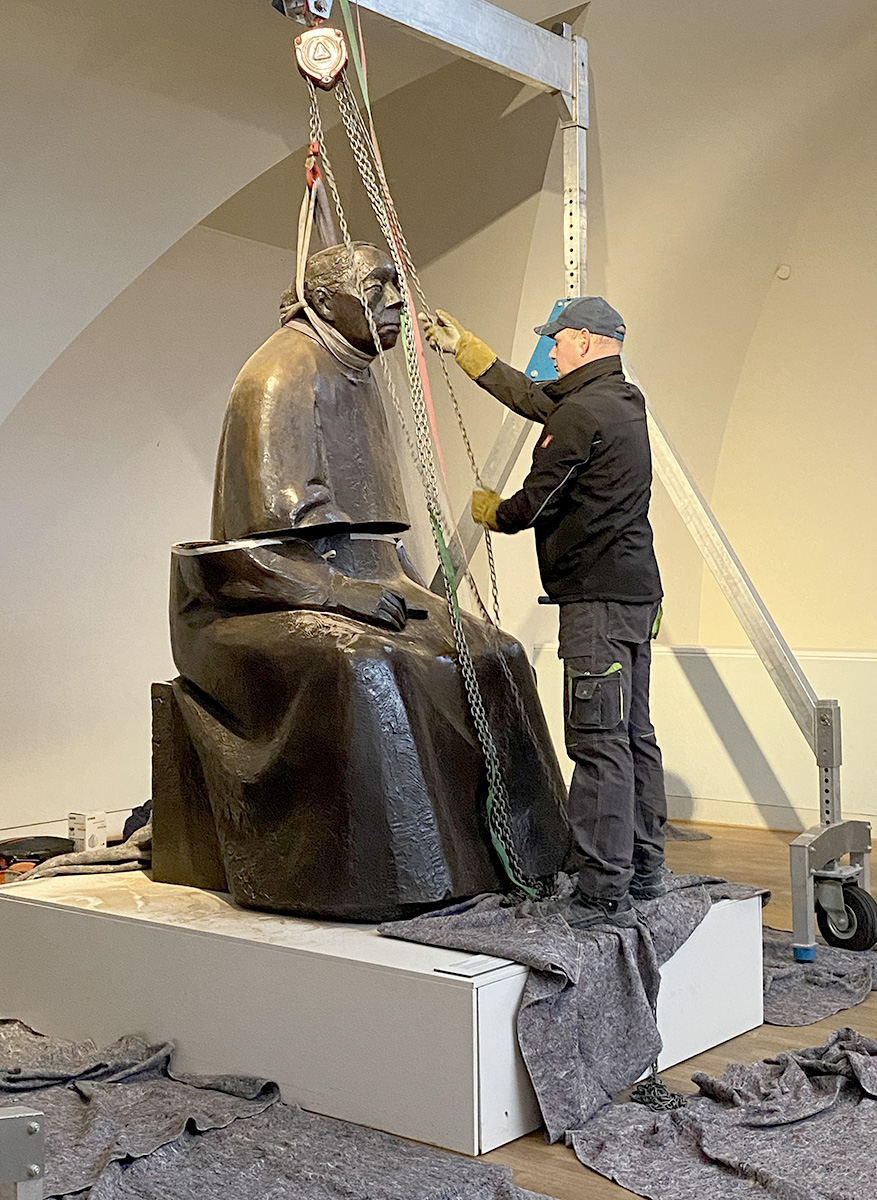
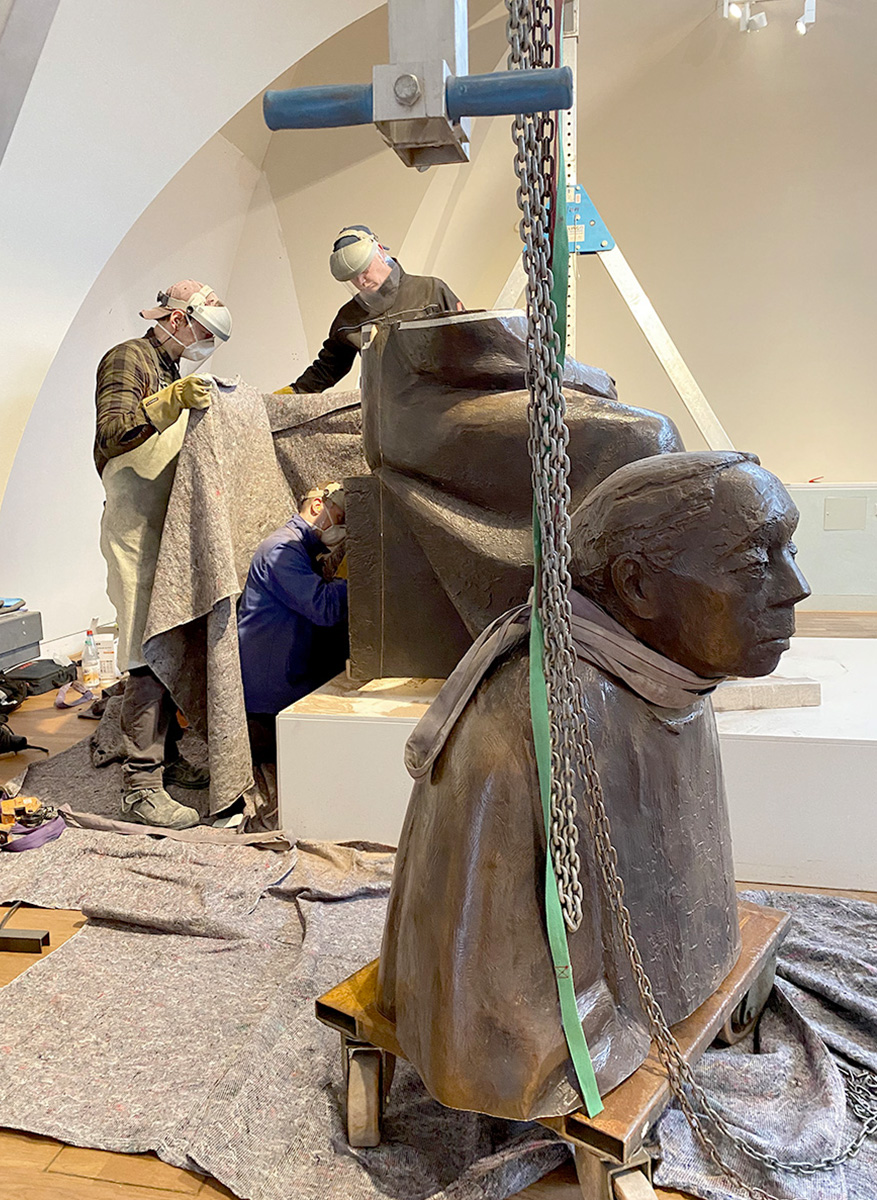
You didn’t even want to look when a round sling was placed around the neck of the Grande Dame, who had been enthroned in the domed roof of the old museum site on Fasanenstrasse for over 35 years. With the utmost care and caution, three employees in protective gear expertly cut her into four pieces, one by one, with a cutting grinder – a necessary step in order to be able to lift the sculpture, which weighed about half a ton, out of the attic of the city villa with a crane and load it onto a transporter, because it would not have fit through the door as a whole, even if it had been cut in two. A noisy and dusty feat of strength that was closely followed and filmed by members of the press.
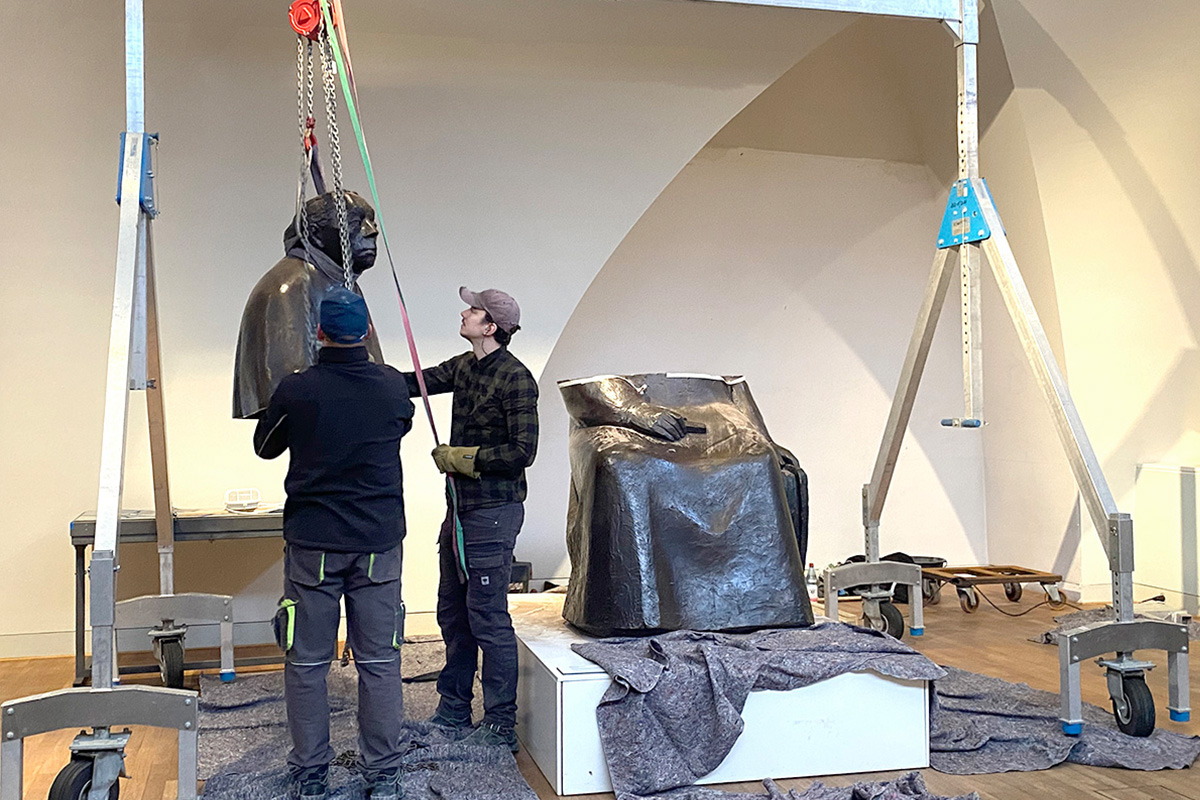
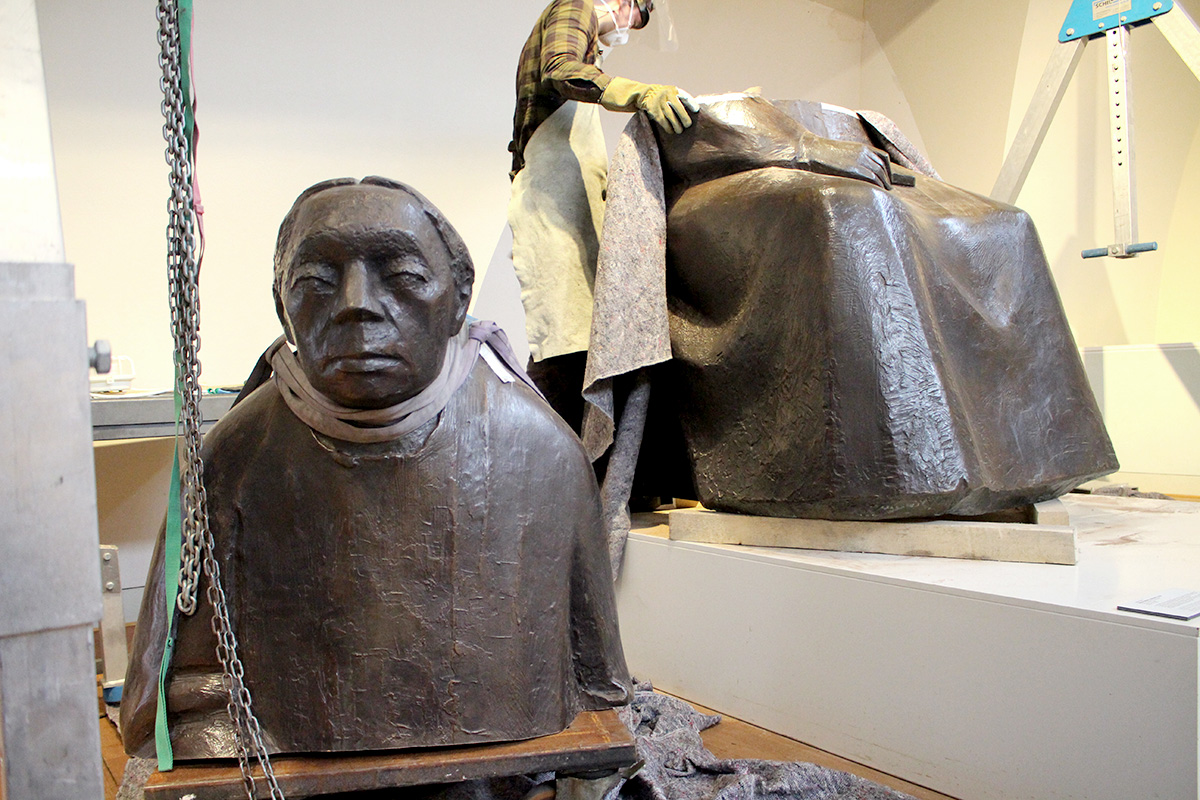
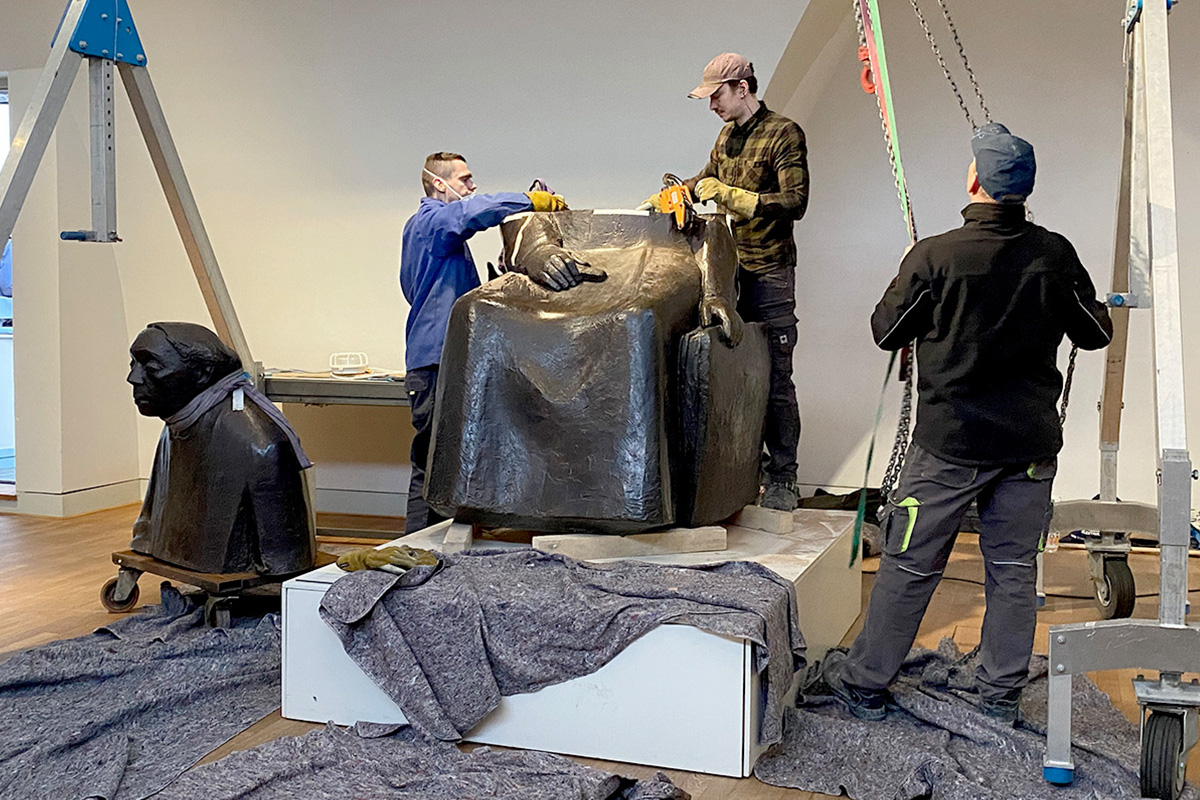
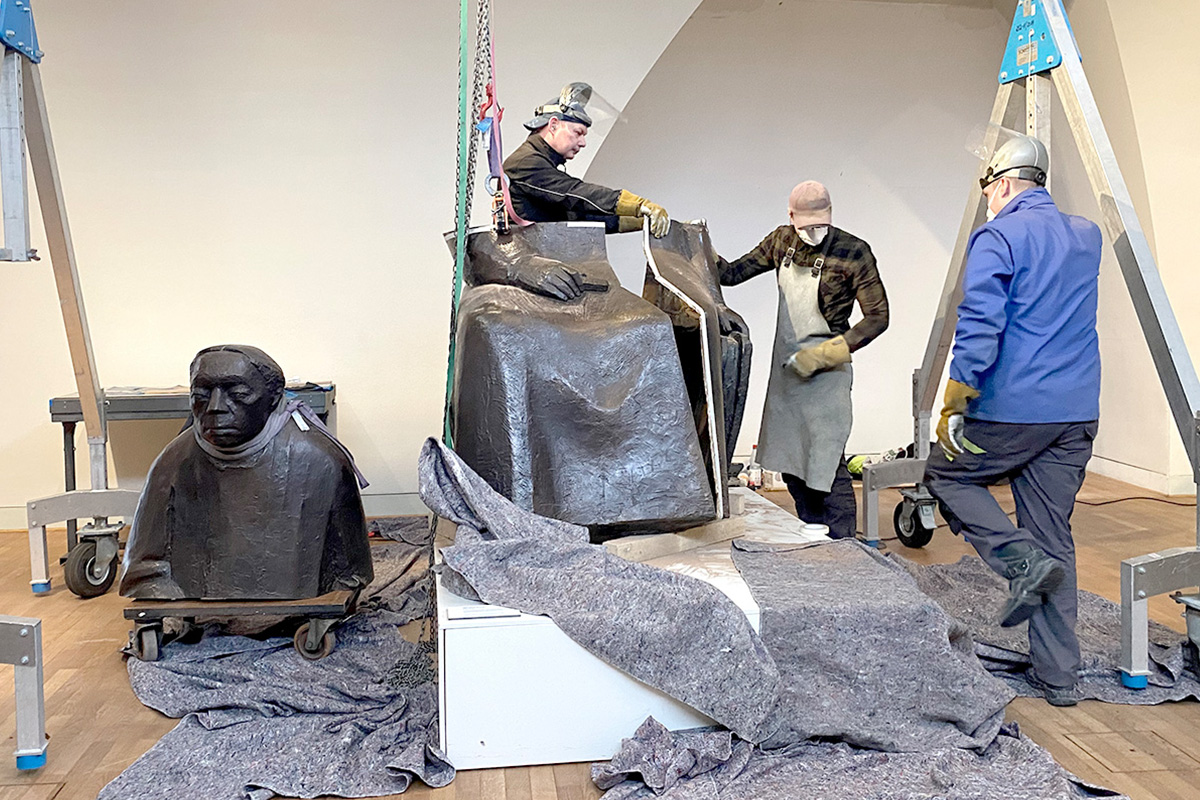
In the workshops of the traditional Berlin art foundry, the Kollwitz figure will be reassembled, welded and patinated. There will then be nothing left of the cuts. A new beginning in flawless beauty.
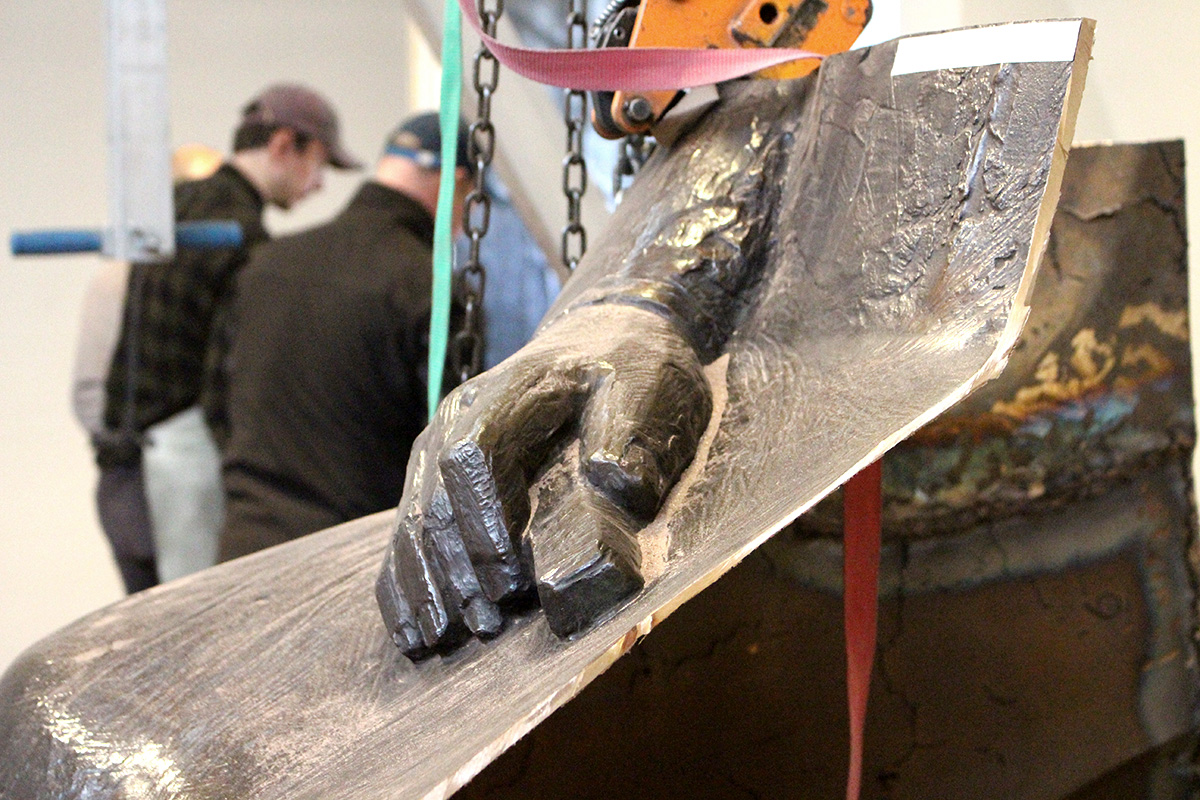
After the soon to be completed elaborate renovation of the Schlosspark at Charlottenburg Palace, the sculpture will take its intended place in the open air in front of the theater building. Like its counterpart on Kollwitzplatz, it will become an open-air sculpture that will greet walkers and museum visitors in the future in its usual serene and steady manner.
